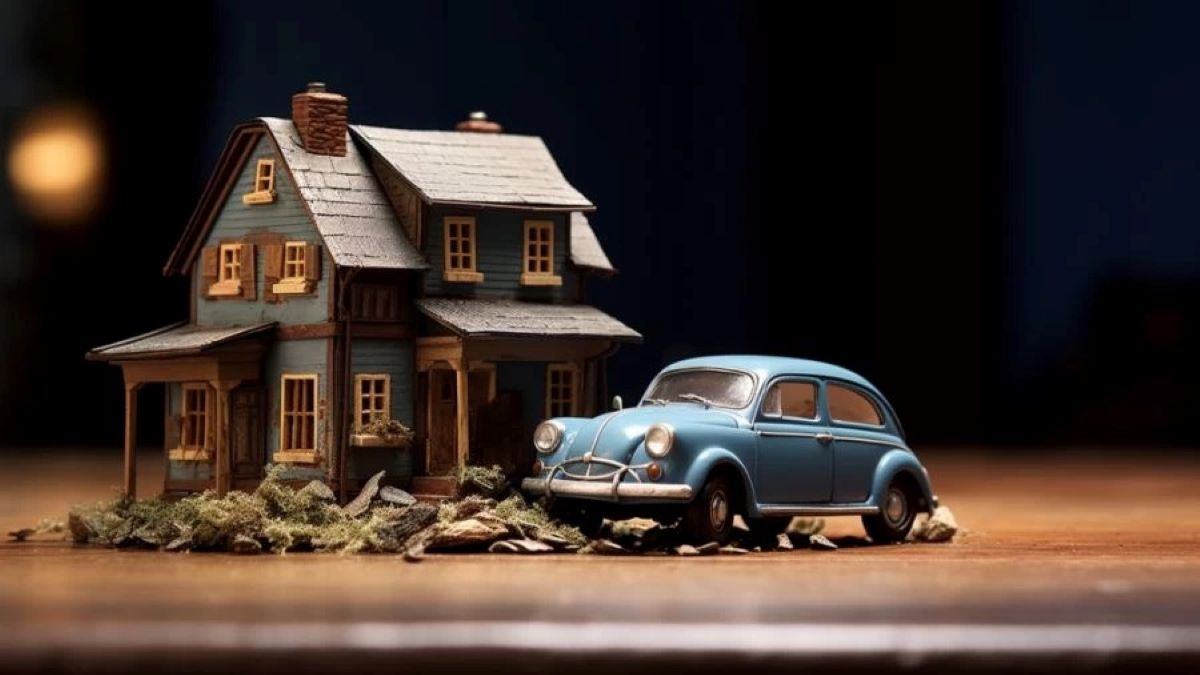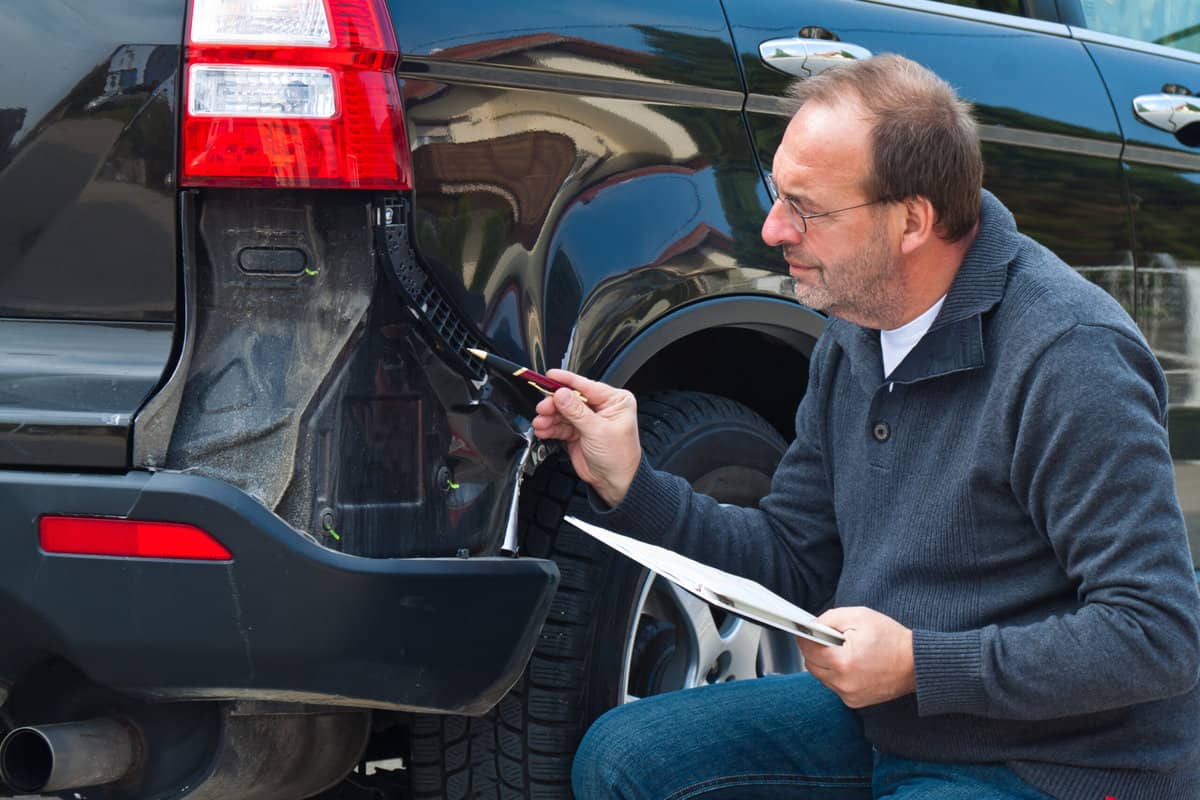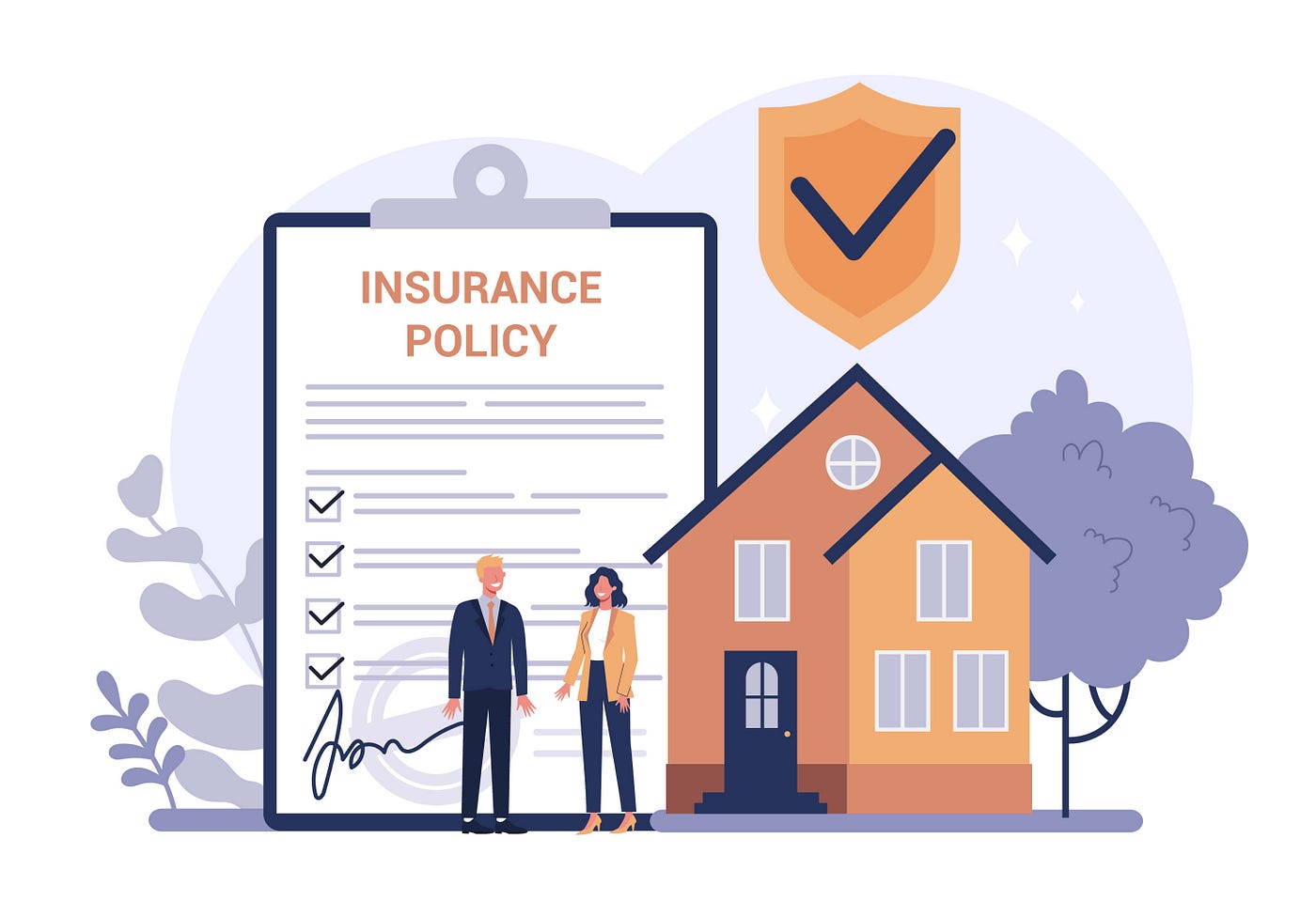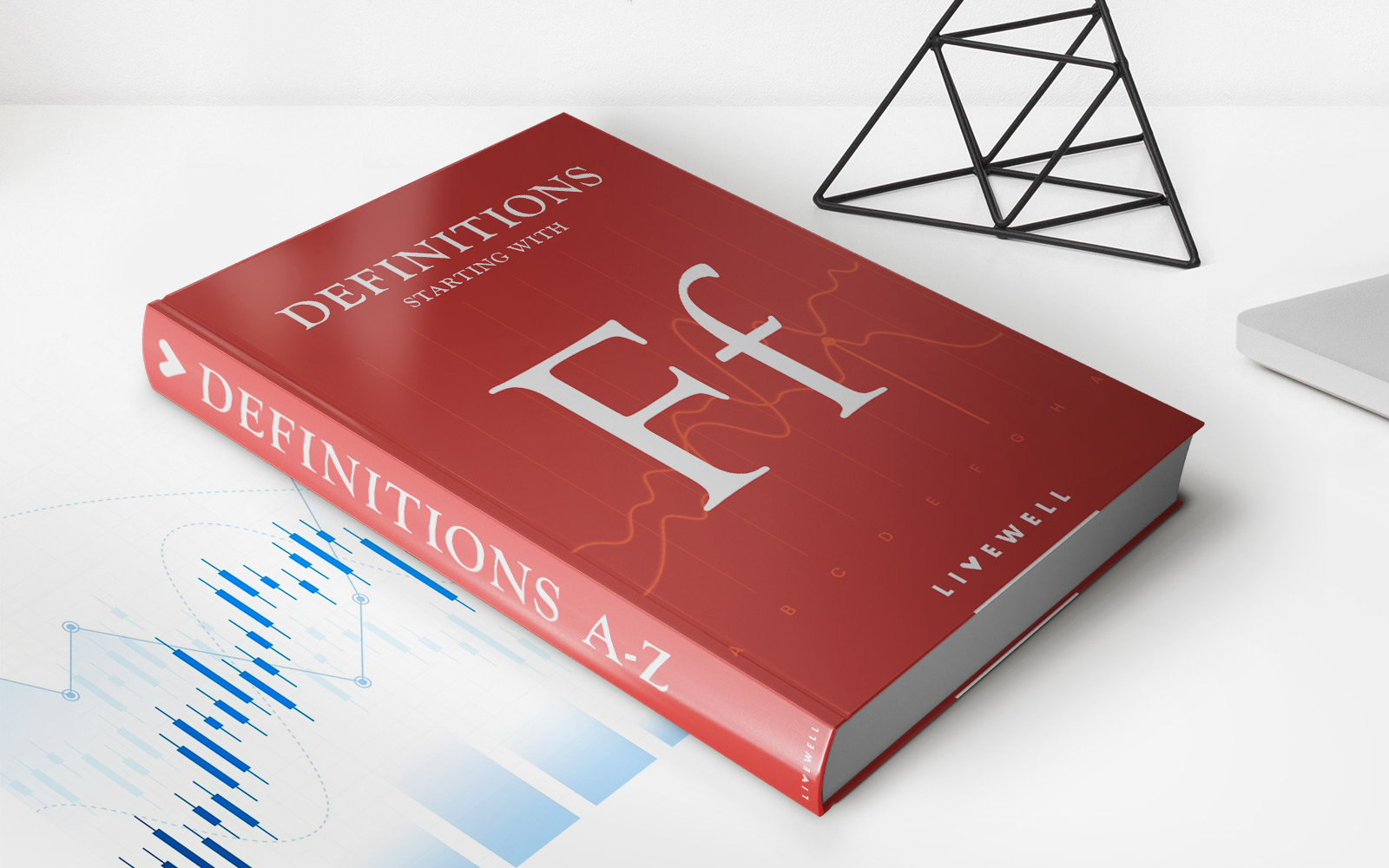Home>Finance>Why Self-Insurance For Risks Involving Your Car Or Home Isn’t Feasible For Most Americans


Finance
Why Self-Insurance For Risks Involving Your Car Or Home Isn’t Feasible For Most Americans
Published: November 10, 2023
Discover why self-insurance for car and home risks may not be feasible for most Americans, and find alternative finance options to protect your assets.
(Many of the links in this article redirect to a specific reviewed product. Your purchase of these products through affiliate links helps to generate commission for LiveWell, at no extra cost. Learn more)
Table of Contents
Introduction
When it comes to insuring our valuable assets such as cars and homes, traditional insurance policies are the norm for most Americans. However, there is an alternative option known as self-insurance that some individuals may consider. Self-insurance involves setting aside funds to cover any potential losses instead of paying premiums to an insurance company. While self-insurance may seem like an attractive prospect, it is important to understand why it is often infeasible for most Americans, especially when it comes to risks involving cars and homes.
In this article, we will delve into the concept of self-insurance and discuss why it is not a practical option for many individuals. We will specifically focus on the challenges of self-insuring risks associated with cars and homes, highlighting the financial limitations and risks involved.
By gaining a deeper understanding of the limitations of self-insurance, individuals can make more informed decisions when it comes to protecting their valuable assets and mitigating potential risks. Let’s explore why self-insurance is often not feasible for most Americans when it comes to insuring their cars and homes.
Understanding Self-Insurance
Before delving into why self-insurance may not be feasible for most Americans in the context of cars and homes, it’s essential to understand the concept of self-insurance itself. Self-insurance is a strategy whereby individuals or businesses choose to bear the financial responsibility for potential losses themselves rather than transferring it to an insurance company.
Instead of paying premiums to an insurance provider, individuals who self-insure set aside a portion of their income or savings to cover any potential damages or liabilities that may arise. The idea is to accumulate enough funds to mitigate the financial impact of unforeseen events and not rely on traditional insurance policies.
Self-insurance can be an attractive option for those who have significant financial resources, a high tolerance for risk, and a good understanding of the potential costs associated with various risks. However, for most Americans, the financial constraints and the uncertainties that come with self-insurance make it a less viable alternative when it comes to insuring their cars and homes.
Now, let’s explore the reasons why self-insurance for cars and homes is often unfeasible and impractical for most individuals.
Why Self-Insurance for Cars is Infeasible
While the concept of self-insurance for cars may initially seem appealing, there are several reasons why it is often infeasible for most Americans.
Lack of Financial Resources: Self-insuring for car-related risks requires setting aside a substantial amount of money to cover potential damages or liabilities. Most individuals do not have the financial resources to set aside a significant sum of money solely for this purpose. This is especially true considering the high costs associated with car repairs and accident-related expenses, such as medical bills and legal fees.
High Cost of Repair and Replacement: Cars are complex machines that require regular maintenance and repairs. The cost of repairs and replacement parts can be quite high, depending on the make and model of the vehicle. In the event of an accident or damage, self-insuring individuals may find themselves financially burdened with hefty repair bills, making it difficult to sustain the self-insurance strategy in the long run.
Risk of Catastrophic Events: While minor accidents and damages can be managed with self-insurance, it becomes more challenging to handle the financial consequences of catastrophic events. Natural disasters, theft, or major collisions can lead to extensive damage or even a total loss of the vehicle. The financial impact of such events can be overwhelming for individuals who have self-insured, potentially putting them in a financially precarious situation.
Considering these factors, it becomes clear that self-insuring for car-related risks is not a practical and feasible solution for most Americans. The high costs involved in repairing or replacing a vehicle, coupled with the risk of catastrophic events, make traditional auto insurance a more suitable option for the majority of individuals.
Lack of Financial Resources
One of the primary reasons why self-insurance for cars is infeasible for most Americans is the lack of sufficient financial resources. Setting aside a significant amount of money solely for car-related risks is not feasible for the average individual.
When self-insuring, individuals must consider the potential costs of repairs, medical expenses, and legal fees in the event of an accident. These expenses can quickly escalate, especially in cases of severe damage or liability claims.
Moreover, car repairs can be quite expensive, depending on the extent of the damage and the specific make and model of the vehicle. In addition, medical bills resulting from injuries sustained in a car accident can quickly accumulate, adding to the financial burden.
For most Americans, allocating a significant portion of their income or savings toward self-insurance for car-related risks is simply not feasible. The average household already faces numerous financial obligations, such as mortgage or rent payments, utilities, groceries, and other everyday expenses. Setting aside a substantial amount of money for car-related risks would place an additional strain on their already tight budgets.
Furthermore, emergencies and unexpected expenses can arise in various areas of life, not just limited to car-related incidents. Without a financial buffer or safety net, individuals who have self-insured for their cars may find themselves ill-equipped to handle other unforeseen financial challenges.
In contrast, traditional auto insurance allows individuals to pay a monthly premium that is more manageable within their budgets. This spreads the risk among a larger pool of insured individuals, ensuring that the financial burden of any damages or liabilities is shared.
Overall, the lack of financial resources plays a significant role in making self-insurance for cars infeasible for most Americans. The high costs associated with car repairs, medical expenses, and legal fees, combined with the everyday financial obligations that individuals must bear, make traditional auto insurance a more realistic and financially viable option for the majority.
High Cost of Repair and Replacement
Another reason why self-insuring for cars is infeasible for most Americans is the high cost of repair and replacement. Cars are complex machines, and even routine repairs can be expensive. In the event of an accident, the costs can quickly escalate, putting a significant strain on an individual’s finances.
Repair costs vary depending on the extent of the damage, the make and model of the vehicle, and the availability of replacement parts. In many cases, specialized repairs and parts can be costly and may require the expertise of trained mechanics or technicians. Self-insuring individuals may find themselves facing exorbitant repair bills that they may not be able to fully cover, leaving them in a difficult financial situation.
In some cases, the cost of the repairs may exceed the value of the car itself. This can be particularly challenging for individuals who have self-insured, as they may have to bear the full burden of these expenses without any assistance from an insurance provider.
Similarly, the cost of replacing a car in the event of a total loss can be significant. Whether due to a severe accident, theft, or other catastrophic events, the expense of finding a suitable replacement vehicle can be a major financial setback for self-insuring individuals.
Conversely, with traditional auto insurance, individuals pay regular premiums that are designed to cover potential repair and replacement costs. Insurance providers have negotiated rates with repair shops and access to replacement parts, which can help reduce the financial burden on policyholders.
Overall, the high cost of repair and replacement is a significant deterrent to self-insuring for cars. The unpredictability of accidents and the potential financial impact of these incidents make it unrealistic for most individuals to bear the full responsibility of covering these expenses on their own.
Risk of Catastrophic Events
One of the major drawbacks of self-insurance for cars is the risk of catastrophic events. While minor accidents and damages can be managed with self-insurance, more severe incidents can have devastating financial consequences.
Natural disasters, such as hurricanes, floods, or wildfires, can cause extensive damage to vehicles. In some cases, the damage may be so severe that the car becomes a total loss. Self-insuring individuals may find it extremely challenging to bear the financial burden of replacing their vehicle in such circumstances.
Additionally, theft is another risk that car owners face. Cars can be stolen, whether in their entirety or specific parts that hold value. Self-insuring individuals may not have the means to replace their stolen vehicle or cover the cost of the stolen parts effectively.
Furthermore, serious accidents resulting in significant liability claims are a major concern. If a self-insured individual is at fault in an accident, they could be responsible for covering the medical expenses, property damages, and legal fees of the other parties involved. These expenses can quickly escalate, potentially leading to financial ruin for the self-insured individual.
In such catastrophic events, traditional auto insurance provides a safety net. Insurance policies typically cover damages caused by natural disasters, theft, and liability claims, helping individuals mitigate the financial impact of these events. The insurance company takes on the responsibility of assessing the damages and providing the necessary financial compensation.
Overall, the risk of catastrophic events poses a significant challenge to self-insurance for cars. The potential financial burden of replacing a vehicle or covering liability claims resulting from major accidents, natural disasters, or theft makes it impractical for most individuals to rely solely on self-insurance for their car-related risks.
Why Self-Insurance for Homes is Infeasible
While the concept of self-insurance may seem appealing for homes, it is often infeasible for most Americans due to several factors. Self-insuring for homes involves taking on the full financial responsibility for potential damages or losses, which can be financially burdensome and risky.
Lack of Financial Resources: Self-insuring for home-related risks requires setting aside a substantial amount of money to cover potential damages, repairs, and liability claims. Most individuals do not have the financial resources to allocate a significant portion of their income or savings solely for this purpose. The costs associated with home repairs, rebuilding, or liability claims can quickly accumulate, making self-insurance impractical for the average homeowner.
High Cost of Repairs and Rebuilding: Homes are valuable assets that require regular maintenance and occasional repairs. The cost of repairs and rebuilding can be significant, particularly in the event of major structural damage caused by natural disasters, fires, or other catastrophic events. Self-insuring individuals may find it difficult to bear the financial burden of these costs, putting their financial stability at risk.
Liability Risks: Homeowners face potential liability risks, such as accidents or injuries that occur on their property. If someone gets injured or experiences property damage while on the homeowner’s premises, they may file a liability claim. Self-insuring individuals would be responsible for covering the medical expenses, legal fees, and potential settlements or judgments. The financial implications of such liability claims can be substantial, making self-insurance a risky choice.
Considering these factors, it becomes evident that self-insurance for homes is often unfeasible for most Americans. The lack of financial resources, high costs of repairs and rebuilding, and the potential liability risks make traditional home insurance a more practical and financially viable option for homeowners.
Lack of Financial Resources
One of the primary reasons why self-insurance for homes is infeasible for most Americans is the lack of sufficient financial resources. Setting aside a significant enough sum of money to cover potential damages, repairs, and liability claims is often beyond the means of the average homeowner.
Homeowners face various financial obligations, such as mortgage payments, utilities, property taxes, and everyday expenses. Allocating a significant portion of their income or savings exclusively for self-insurance would place an immense strain on their finances.
Repairs and maintenance costs for homes can be expensive, particularly if major issues or structural damage arises. From plumbing repairs to roof replacements, the costs can quickly add up. Additionally, in the event of a natural disaster, such as a hurricane or earthquake, the damage to a home and the subsequent cost of repairs or rebuilding can be astronomical.
Furthermore, homeowners risk facing liability claims if someone is injured or experiences property damage while on their premises. The potential costs associated with medical expenses, legal fees, and potential settlements or judgments can be significant. Self-insuring individuals may not have the financial capability to handle such liability claims, leaving them vulnerable to financial instability.
On the other hand, traditional home insurance provides homeowners with a more manageable solution. By paying regular premiums, homeowners can transfer the financial risk to an insurance provider. This spreads the risk among a larger pool of policyholders and ensures that the financial burden of potential damages, repairs, or liability claims is shared.
In summary, the lack of financial resources plays a significant role in making self-insurance for homes infeasible for most Americans. The high costs associated with repairs, rebuilding, and potential liability claims, coupled with the everyday financial obligations that homeowners must fulfill, make traditional home insurance a more reasonable and financially viable choice.
High Cost of Repairs and Rebuilding
One of the key reasons why self-insurance for homes is infeasible for most Americans is the high cost of repairs and rebuilding. Homes require regular maintenance and occasional repairs, which can be financially burdensome for homeowners who choose to self-insure.
Repair costs for homes can vary significantly depending on the type and extent of damage. Whether it’s a leaky roof, electrical issues, plumbing problems, or structural damage, the costs can quickly add up. Homeowners who self-insure may find it challenging to bear the full financial burden of these repairs, especially when faced with significant or recurring issues.
In the event of a natural disaster, such as a hurricane, flood, or fire, the damage to a home can be devastating. Rebuilding a home from scratch or repairing extensive damage can be an enormous financial undertaking. Self-insuring individuals may not have the necessary resources to fund the reconstruction or repairs, potentially leaving them without a suitable place to live.
Furthermore, the cost of materials, labor, and contractors can fluctuate, making it difficult to accurately estimate the expenses associated with repairs and rebuilding. Self-insuring homeowners may find themselves facing unexpected budgetary constraints or delays in completing the necessary work, further complicating the financial burden they have taken on.
On the other hand, traditional home insurance provides homeowners with a more predictable and manageable solution. Insurance policies typically cover the cost of repairs or rebuilding, ensuring that homeowners are not solely responsible for the financial burden of these expenses. Insurance providers have pre-negotiated rates with contractors and access to construction materials, which can help reduce the overall cost for homeowners.
Overall, the high cost of repairs and rebuilding is a significant deterrent to self-insurance for homes. The unpredictability of home-related issues, coupled with the potential for extensive damage resulting from natural disasters or other incidents, makes traditional home insurance a more practical and financially viable option for the majority of homeowners.
Liability Risks
Another factor that makes self-insurance for homes infeasible for most Americans is the potential liability risks homeowners face. Liability risks refer to the legal responsibility homeowners have for any injuries or property damage that occur on their property.
Accidents can happen at any time, even within the confines of a homeowner’s property. If a guest or visitor gets injured while on the premises, the homeowner may be held liable for medical expenses, rehabilitation costs, and even legal fees if a lawsuit is filed. These expenses can quickly escalate, potentially resulting in financial strain for self-insured homeowners.
Liability claims can arise in various situations, such as a slip and fall accident, a dog bite, or injuries caused by unsafe conditions on the property. Even if homeowners are diligent in maintaining a safe environment, accidents can still occur, and they may be legally responsible for the resulting damages.
Self-insuring homeowners may not have the financial resources to cover the costs associated with liability claims. Legal fees can be substantial, and if a judgment or settlement is reached, the financial impact can be significant. Without insurance coverage, individuals who choose to self-insure put themselves at risk of draining their savings or even facing bankruptcy.
On the contrary, traditional home insurance provides liability coverage as part of the policy. Homeowners’ insurance policies typically include a certain amount of liability protection, which can help cover costs associated with injuries or property damage on the homeowner’s property. This provides homeowners with a financial safety net and peace of mind, knowing that they are protected in the event of a liability claim.
Overall, the potential liability risks that homeowners face make self-insurance impractical for most Americans. The high costs associated with medical expenses, legal fees, and potential settlements or judgments can be financially devastating. Traditional home insurance offers homeowners the necessary protection and financial support to handle liability risks effectively.
Conclusion
While the concept of self-insurance may sound appealing, it is often infeasible for most Americans when it comes to insuring their cars and homes. Self-insurance requires individuals to bear the full financial responsibility for potential damages, repairs, and liability claims, which can put a significant strain on their finances and introduce significant risks.
When it comes to insuring cars, most individuals lack the financial resources to set aside a significant amount of money solely for this purpose. The high cost of repairs and the risk of catastrophic events, coupled with the everyday financial obligations that individuals face, make traditional auto insurance a more practical option for the majority.
Similarly, self-insuring for homes is often unrealistic due to the lack of financial resources, the high cost of repairs and rebuilding, and the potential liability risks that homeowners face. The unpredictable nature of home-related issues, coupled with the potential for catastrophic events and liability claims, makes traditional home insurance a more viable and financially sound choice for homeowners.
Traditional insurance policies spread the risk among a larger pool of policyholders and provide a more predictable and manageable solution. Insurance companies have negotiated rates with repair shops, access to replacement parts, and liability coverage to protect individuals against unforeseen events and mitigate financial risks.
While self-insurance may be an option for those with substantial financial resources, a high tolerance for risk, and a thorough understanding of the potential costs involved, it is not feasible for the majority of Americans. Therefore, it is crucial to carefully consider one’s financial situation, risk appetite, and the potential financial implications before deciding whether self-insurance is the right choice.
In conclusion, while self-insurance may seem like an attractive alternative, the lack of financial resources, high costs of repairs and rebuilding, liability risks, and the potential for catastrophic events make traditional insurance policies the more viable and practical option for most Americans when it comes to insuring their cars and homes.





